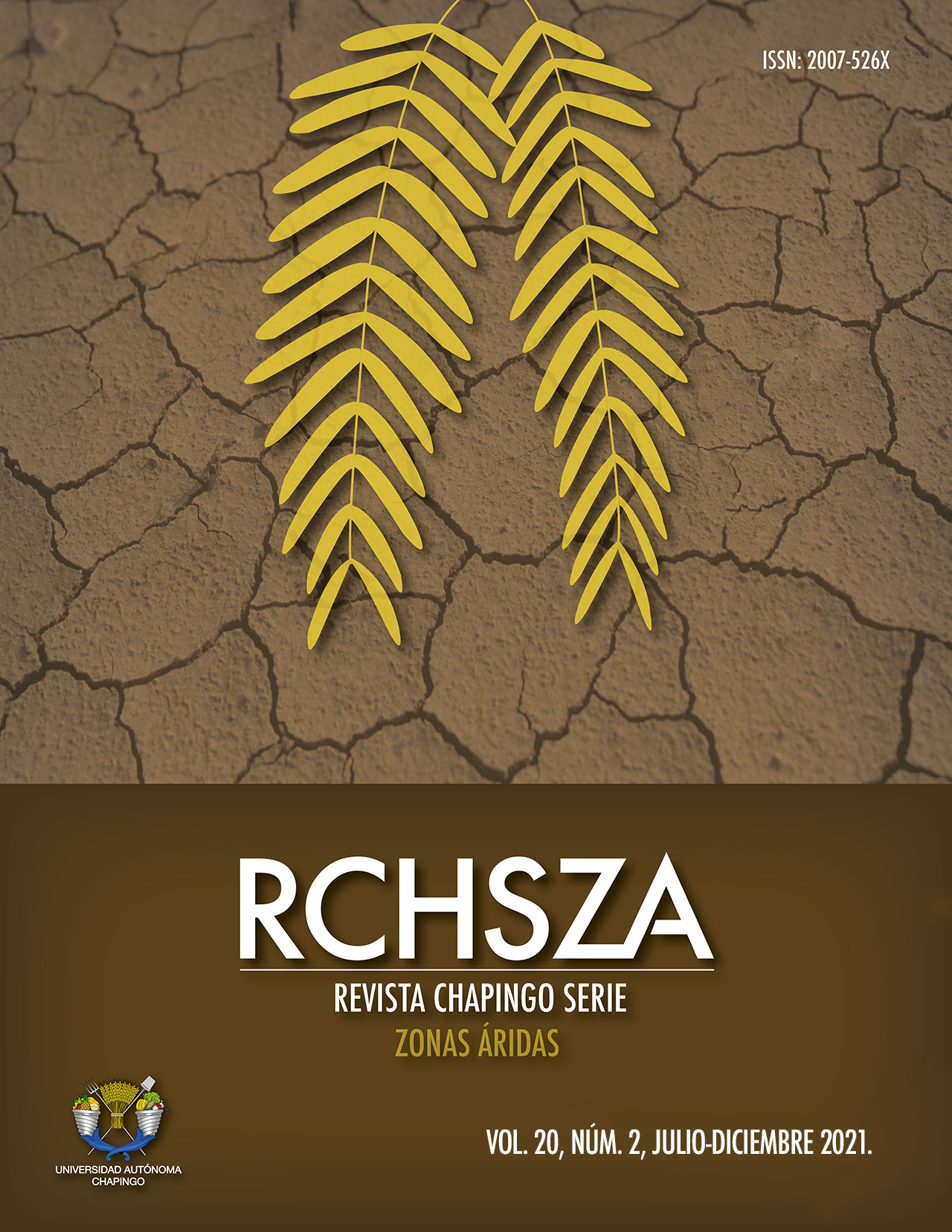Abstract
Mass rearing of beneficial organisms on the natural host is usually very expensive. For this reason, easier hosts to cultivate are sought for reducing production costs; however, they may lose their effectiveness in the field. Therefore, the objective of this study was to compare the discrimination capacity of the Jaliscoa hunteri parasitoid (Hymenoptera: Pteromalidae) on its natural host (Anthonomus eugenii Cano) or a factitious one (Callosobruchus maculatus Fabricius). Essays were carried out in artificial oviposition units in the laboratory by using wild females of J. hunteri collected in field and females from a colony of 13 generations raised on a factitious host. The origin of the females used in the research did not affect the oviposition preference and the feeding on the host; however, wild and laboratory females preferred the natural host over the factitious one.
References
Chesnut, T. L., & Cross, W. H. (1971). Arthropod parasites of the boll weevil, Anthonomus grandis: 2. Comparisons of their importance in the United States over a period of thirty-eight years. Annals of the Entomological Society of America, 64(3), 549–557. https://doi.org/10.1093/aesa/64.3.549
Fedde, V. H., Fedde, G. F., & Drooz, A. T. (1982). Factitious hosts in insect parasitoid rearings. Entomophaga, 27(4), 379–386. https://doi.org/10.1007/BF02372060
Grenier, S. (2009). In vitro rearing of entomophagous insectspast and future trends: a minireview. Bull. Insectol, 62, 1–6. http://citeseerx.ist.psu.edu/viewdoc/download?doi=10.1.1.543.8180&rep=rep1&type=pdf
Grenier, S., & De Clercq, P. (2003). Comparison of artificially vs. naturally reared natural enemies and their potential for use in biological control. In Quality control and production of biological control agents (pp. 115–131), CABI Publishing. Obtenido de: http://hdl.handle.net/1854/LU-209013
Iqbal, A., Chen, Y. M., Hou, Y. Y., Zhang, L., Desneux, N., & Zang, L. S. (2019). Factitious host species impact on the outcome of multiparasitism between egg parasitoids. Journal of Pest Science, 92(3), 1261–1269. https://link.springer.com/article/10.1007/s10340-019-01122-8#article-info
Joyce, A. L., Aluja, M., Sivinski, J., Vinson, S. B., Ramírez-Romero, R., Guillen, L. (2010). Effect of continuous rearing on courtship acoustics of five braconid parasitoids, candidates for augmentative biological control of Anastrepha species. BioControl, 55(5), 573–582. https://doi.org/10.1007/s10526-010-9321-y
Krimmel, B. A., & Morse, D. H. (2019). Host‐size decisions of female parasitoid wasps seeking hidden hosts. Ecological Entomology, 44(4), 552–559. https://doi.org/10.1111/een.12733
Leppla, N. C. (2014). Concepts and methods of quality assurance for mass-reared parasitoids and predators. In Mass Production of Beneficial Organisms (pp. 277–317). Academic Press. https://doi.org/10.1016/B978-0-12-391453-8.00009-1
Martínez, M. L. (1994). El control de calidad en la cría de insectos. In M. N. Bautista, C. G. Vejar & S. J. Carrillo (Eds.), Técnicas para la cría de insectos (pp. 25–37). Montecillo, Texcoco, Estado de México. Colegio de Postgraduados.
Morales-Ramos, J. A., Rojas, M. G., & Shapiro-Ilan, D. I. (Eds.). (2013). Mass production of beneficial organisms: invertebrates and entomopathogens. Academic Press.
Murillo-Hernández, J. E., García-Martínez, Y., Rodríguez- Leyva, E., & Lomeli-Flores, J. R. (2019). Host Feeding by Jaliscoa hunteri on Immature Stages of Pepper Weevil2. Southwestern Entomologist, 44(3), 775–778. https://doi.org/10.3958/059.044.0323
Ovruski, S. M., Bezdjian, L. P., Van Nieuwenhove, G. A., Albornoz-Medina, P., & Schliserman, P. (2011). Host preference by Diachasmimorpha longicaudata (Hymenoptera: Braconidae) reared on larvae of Anastrepha fraterculus and Ceratitis capitata (Diptera: Tephritidae). Florida Entomologist, 94(2), 195–200. https://doi.org/10.1653/024.094.0211
Reyes-Rosas, M. A., Loera-Gallardo, J., & López-Arroyo, J. I. (2010). Modificación al proceso de producción masiva de los parasitoides Catolaccus grandis y Catolaccus hunteri. Agronomía Mesoamericana, 21(1), 95–101. Obtenido de https://www.scielo.sa.cr/scielo.php?script=sci_arttext&pid=S1659-13212010000100010
Rodríguez-Leyva, E., Leyva, J. L., Gómez, V., Bárcenas, N. M., & Elzen, G. W. (2000). Biology of Catolaccus hunteri (Hymenoptera: Pteromalidae), a parasitoid of pepper weevil and boll weevil (Coleoptera: Curculionidae). Annals of the Entomological Society of America, 93(4), 862–868. https://doi.org/10.1603/0013-8746(2000)093[0862:BOCHHP]2.0.CO;2
Rodríguez Leyva, E., Gómez Tovar, V., Bárcenas Ortega, N. M., & Leyva Vázquez, J. L. (2002). Efecto de diferentes factores sobre la cría de Callosobruchus maculatus (Coleoptera: Bruchidae) para la producción de Catolaccus spp. (Hymenoptera: Pteromalidae). Acta Zoológica Mexicana (n. s.), (86), 87–101. https://www.redalyc.org/pdf/575/57508605.pdf
Rodríguez-Leyva, E., Stansly, P. A., Schuster, D. J., & Bravo-Mosqueda, E. (2007). Diversity and distribution of parasitoids of Anthonomus eugenii (Coleoptera: Curculionidae) from Mexico and prospects for biological control. Florida Entomologist, 90(4), 693–703. http://dx.doi.org/10.1653/0015-4040(2007)90[693:DADOPO]2.0.CO;2
Schuster, D. J. (2007). Suppression of Anthonomus eugenii (Coleoptera: Curculionidae) pepper fruit infestation with releases of Catolaccus hunteri (Hymenoptera: Pteromalidae). Biocontrol Science and Technology, 17(4), 345–351. https://doi.org/10.1080/09583150701211970
Statistix (2006). Statistix analytical software. Barland. International Inc. Tallase, Florida USA
Torres-Ruíz, A., & Rodríguez-Leyva, E. (2012). Guía para el manejo integrado de plagas del pimiento bajo invernadero, con énfasis en el picudo del chile. Koppert México SA de CV. 48p. DOI: https://doi.org/10.13140/RG.2.1.2688.4009
Vásquez, E., Dean, D., Schuster, D., & Van Etten, P. (2005). A laboratory method for rearing Catolaccus hunteri (Hymenoptera: Pteromalidae), a parasitoid of the pepper weevil (Coleoptera: Curculionidae). Florida Entomologist, 88(2), 191–194. https://doi.org/10.1653/0015-4040(2005)088[0191:ALMFRC]2.0.CO;2

This work is licensed under a Creative Commons Attribution-NonCommercial 4.0 International License.
Copyright (c) 2021 Revista Chapingo Serie Zonas Áridas



